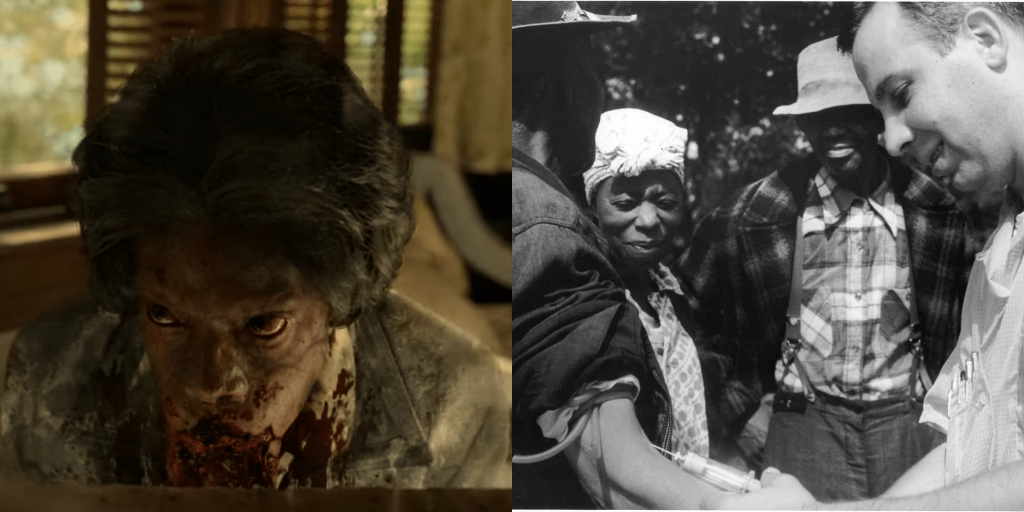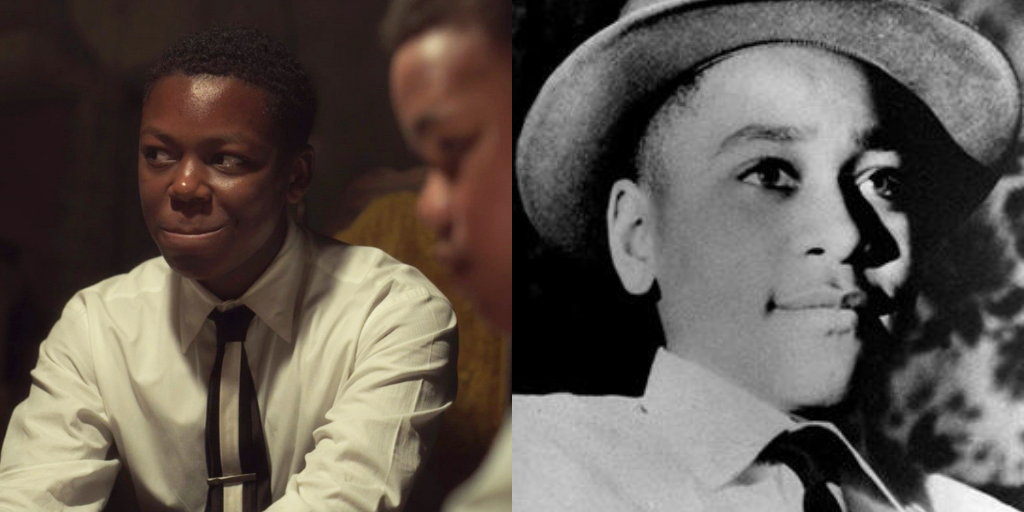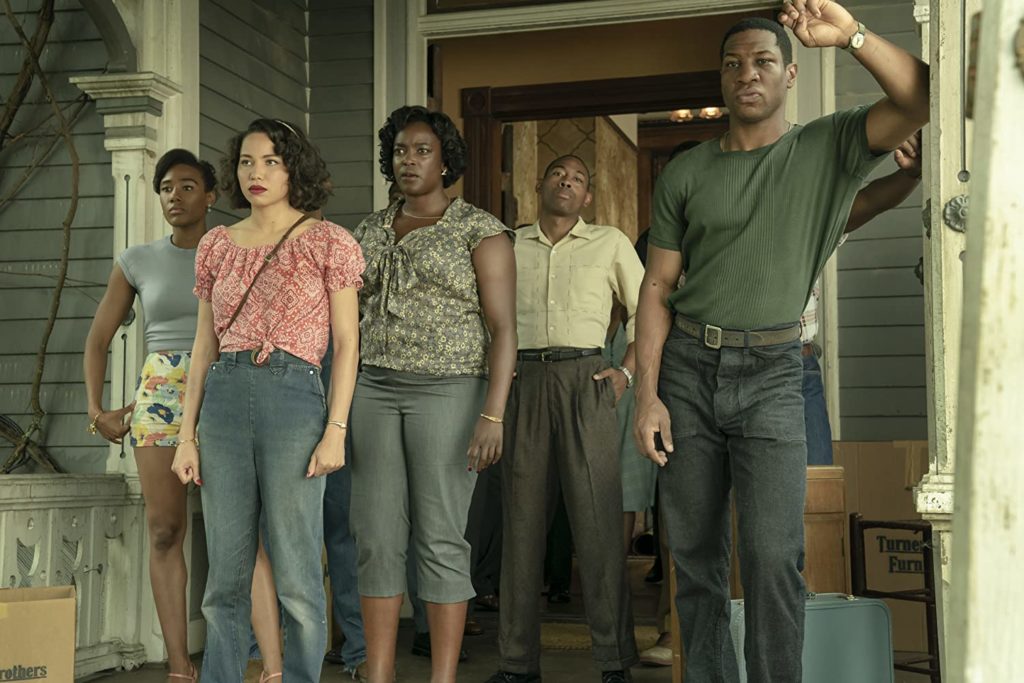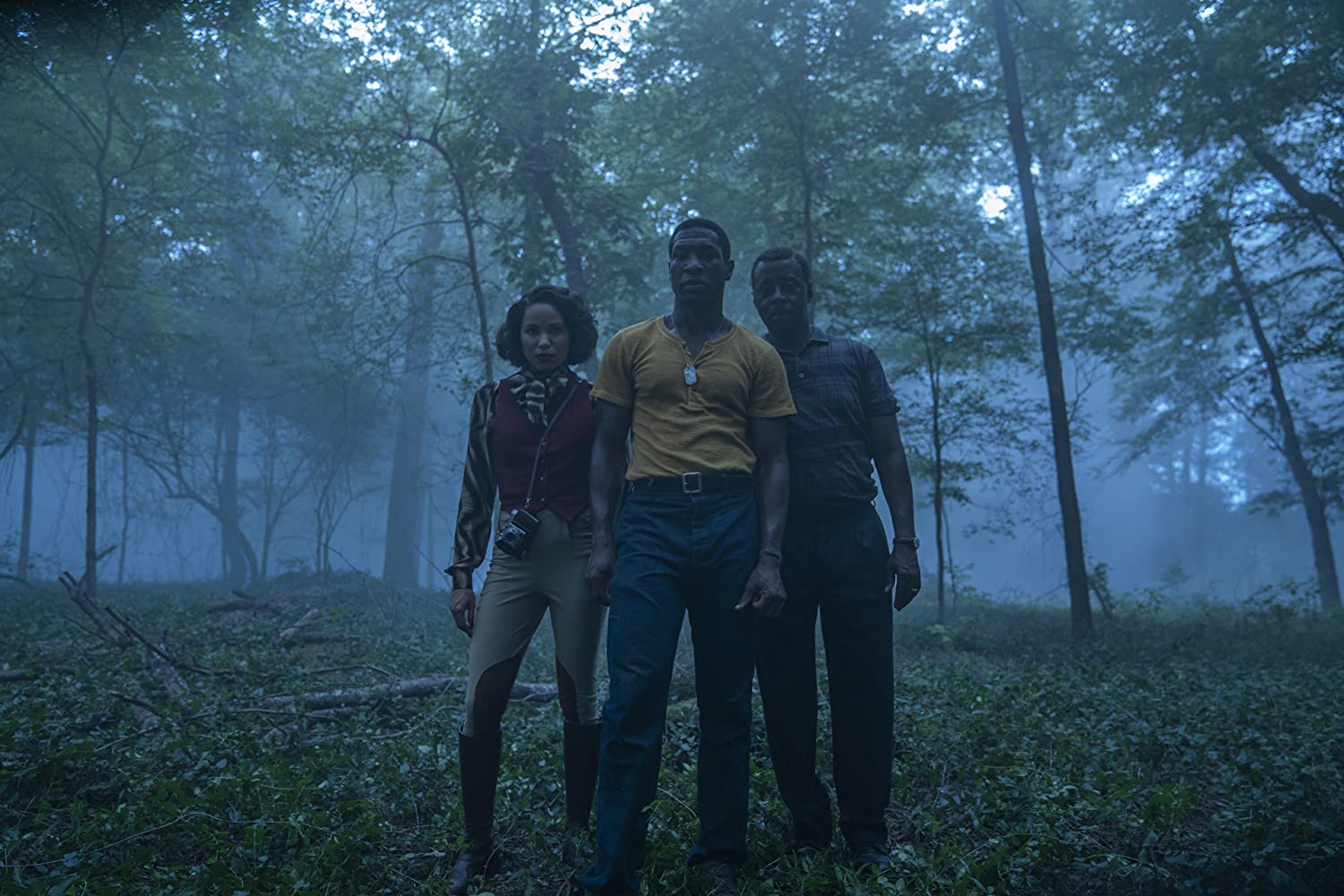Entertainment like Lovecraft Country is educating the masses about America’s racist past and acts as a griot of African-American history. (Photo credit: HBO)
One of the best things about Lovecraft Country is its commitment to presenting its audience with African-American history. The series is so chock full of references, cameos, and historical markers it will require the viewer to rewatch this series multiple times to catch everything.
In the latest episode, “Holy Ghost,” we are yet again presented with tons of references, both little-known and widely talked about, from African-American history. Small cameos of actors playing a young James Baldwin and a kid named Gil, aka Gil Scott-Heron, the poet who provided the groundwork for modern rap and hip-hop and his performance of “Whitey on the Moon” permeated the Lovecraft Country episode of the same name.
Leti’s decision to buy a vacant (and haunted) house in an all-white neighborhood evokes the Cicero race riots of 1951. The community of Cicero, Ill. attacked a Black apartment complex for daring to exist within its white confines. Through 1953 and 1954, Chicago also endured the Trumbull Park race riots, also because white people didn’t want to live next to Black neighbors. There were also two other big moments for Black history buffs. First, the house’s mystery stems from a white astrophysicist who started doing experiments on Black people. He could get away with it since no one would question when a Black person would go missing. Second, another child was hanging out with Gil–a young boy with a unique tie nicknamed Bobo.
The focus on a white scientist doing experiments on Black people might seem farfetched, but it’s a practice that’s as American as slavery.
In my book, The Book of Awesome Black Americans, I mention a few of those moments, such as activist Fannie Lou Hamer becoming a victim of the racist Mississippi practice of giving Black women hysterectomies without their consent, rendering them infertile. The purpose–to control the population of a race seen by white racists as a pestilence. James Marion Sims, known to the broader medical community as the “father of modern gynecology” for developing the pap smear, earned that moniker by performing experiments on Black female slaves, believing that they didn’t experience pain the same way white women would.
The U.S. government conducted experiments on Black men from the 1930s to the early 1970s in the Tuskegee Study of Untreated Syphilis in the Negro Male. Unknowingly, Black men were infected with syphilis and studied by the U.S Public Health Service. Henrietta Lacks, a woman who died from cancer, had her cells used without her family’s consent for years. During those years, many of our cancer treatments were developed from her cells. It’s only been recently that her family is now given guardianship over her cells, providing consent to the medical community.

These are just a handful of moments I discuss in my book, and what’s unfortunate is that there are many more instances out there. There are probably even more than we know, many that haven’t ever been written down. For example, it wasn’t uncommon for white people to sell Black lynching victims’ body parts, like fingers and other small parts, as souvenirs, discussed in the docu-short The Changing Same. While it’s not “experimentation,” selling those body parts stems from the same inhumane feelings white scientists had towards Black bodies. In their eyes, the Black body is not the vessel for a soul. It’s merely a piece of meat that can be beaten, dissected, consumed, and destroyed.
That same macabre interest in dissection and destruction led to the death of Emmett Till, the boy who, in life, also went by the nickname “Bobo.”
A white woman lied about Till whistling at her so that she could get her husband’s attention. Her husband and his half-brother tracked down Till and kidnapped him. Then they beat him, disfigured him, shot him, and left his body in the Tallahatchie River. When his body was finally found, he was barely unrecognizable.
Since we know the end of Till’s story, seeing him brought back to life as a joking, happy boy in Lovecraft Country is startling. Actor Rhyan Hill channels Till as he plays with his friends’ Ouija board, excited for his upcoming trip down south, only for the spirit of Uncle George to tell him he won’t have any fun at all.
These moments, and others preceding it within this series, don’t just serve as reminders of the past. Lovecraft Country is acting as a modern-day griot, giving voice to the voiceless and keeping the past–and its lessons–alive.

A “griot,” according to Encyclopedia Britannica, “has long been a part of West African culture. The griots’ role has traditionally been to preserve the genealogies, historical narratives, and oral traditions of their people.” Songs of praise are also part of the griot’s collection of knowledge, which, to me, connects to African-Americans’ reinterpretation of white Christianity into something more familiar, grounded, and closer to African roots of oral tradition.
“In addition to serving as the primary storytellers of their people, griots have also served as advisers and diplomats,” the encyclopedia continues. “Over the centuries their advisory and diplomatic roles have diminished somewhat, and their entertainment appeal has become more widespread.”
Despite the griot becoming more about entertainment, I wager that the griot’s oral traditions have become even more potent because of its entertainment factor. It’s through entertainment that media like Lovecraft Country are educating the masses about America’s racist past. Indeed, this type of media is retraining the minds of those who watch it to be even more watchful against racist acts, now that they know all the forms racism can take.
The series has taken it upon itself to bring the stories of so many Black people, regardless of fame, back to the present day. It has taken Till away from how we usually think of him–in the past tense–and reminds us that he had a life worthy of living. He had friends, hopes, and gentle expectations. The series reminds us that every Black person who has been victimized had a right to life. When Leti’s chants bring the dead back to their proper, human forms, we are reminded that Black people aren’t objects for white consumption. They are humans who only want to live well.

Lovecraft Country isn’t the only piece of media that’s acted as the griot for African-American history. Watchmen, the show Lovecraft Country is often compared to, is a similar griot, rebirthing discussion about the Tulsa Race Massacre for generations that never heard about America’s horrors. For all of Watchmen‘s boldness, Lovecraft Country aims to be even bolder by increasing our knowledge of African-American life with every frame. It desires to yell the names of those forgotten and the scars they bear to us every second of every episode.
Yes, technically, Lovecraft Country is “entertainment,” just like how the griot’s stories can be entertaining. But, like those griots who advised, strategized, and provided a conscience to politics, Lovecraft Country and other works like it aim to inform us, awaken our consciousness, and give us the tools to strategize for a better America.
The first act of the griot is to speak. The second act of the griot is to provide an invitation to the audience to listen. By listening, we viewers aren’t passive to history; we are actively informing ourselves how to rectify the present by putting an ear to the past. The griot transforms our attention into awareness, affirmation, action.
